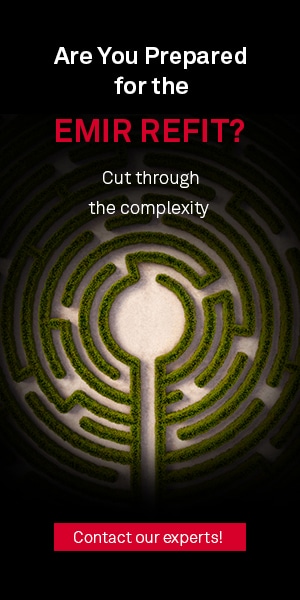
Buying RegTech Software? Don’t underestimate the value of these two things
Regulation is increasing – no debate there – we all know it and we are all trying to deal with it. The upside is the regtech industry is booming and continually developing solutions to help ease the regulatory reporting pain of the financial services community. However, for the technology buyer in this relatively new space – the abundance of vendors and the availability of regulatory reporting features can make coming to a clear purchasing decision confusing. At the same time, a wrong purchasing decision can put the compliance manager at severe risk for regulatory reporting inaccuracy and unreliability and even worse, exposure to hefty fines for non-compliance from the regulator.
Being active in the financial services technology/fintech industry over the past 15 years, we have seen first-hand what it takes to achieve success when implementing new financial services solutions. Naturally when searching for a solution, buyers examine the technology, product feature sets as well as the cost of the product. These factors are of the utmost importance, but often neglect the importance of the onboarding process and the role the relationship manager plays. For instance, cost as a factor alone can be deceptive because an unsuccessful onboarding process can spell countless problems down the line and the product could land up costing far more in the long run to fix. Often, the buyers who complain about not getting the promised benefits of the technology sold to them either had a poor onboarding process or after signing on the dotted line their relationship manager was nowhere to be seen.
Why is onboarding so important in ensuring your regulatory reporting success?
Especially in the world of regulation, where integration of trading systems is complex, and trades need to be reported daily, few compliance managers can afford to take the luxury of getting to know their new technological product over months, nor do they have the time to be repeatably fixing errors. For this very reason, the onboarding part of regulation technology is even more important than in some other industries.
The main objective of onboarding a customer is to get the customer up and running with as little disturbance to their current workflows as possible while meeting their new business objectives quickly. At the end of the onboarding process, the customer should be able to report automatically with no manual intervention required to create the reports. This will free up time for compliance managers to move from transaction processing to business auditing. Those regtech companies that are aligned with their customers in this process and see their customer’s success as their own will reap the most reward and ultimately maintain happy customers.
What does a thorough onboarding process look like and what role does the relationship manager play in the process?
The onboarding process usually follows the following stages:
1) Company and business analysis
The highest onboarding success levels are often found in companies where the relationship manager is either heavily involved with the onboarding process or hands over the customer to a professional services team while monitoring the process in the background. The smooth and seamless transition from prospect to customer enables customers to get the most value out of the platform they have just purchased.
Furthermore, when the sales and professional services teams are aligned, then the overlap of learning about the customer’s needs do not have to be repeated, saving time and frustration in repeating the exploratory process. Unfortunately, many companies have segregated teams with little internal integration and communication so in the worst-case scenario customers either slip through the cracks completely and get ignored or at best must spend valuable time rehashing discussions that have already taken place with the sales team.
2) Connectivity and development
During this phase, the professional services teams works alongside the customer to set up the new system and configure and develop the integration. This is a foundational step that if not done properly can spell problems with live trades going through on time.
3) Testing
Before releasing a customer into the live reporting environment, it is imperative to test connectivity and validate that the regulatory reports that are being created are as they should be. At this stage results are analyzed, and any finishing touches and fine tuning are made before the customer reviews and provides their final approval. This stage reveals any unknown errors and gives the customer the formal opportunity to tackle any open questions or issues.
4) Training
Providing systematic training on how to use the technology in a smart and intuitive way allows the customer to get the best out of the product in the quickest amount of time. It also fast tracks the learning process and allows customers to get to know the tips and tricks of using the system. There is nothing more frustrating to customers than having to figure out how to use a technology with no guidance (unless of course you are super techy and like to self-learn.)
5) Live Reporting
The final stage is the go-live stage, when trades are being reported live to the ARM/Trade Repository or regulator and the daily reports are available to be monitored on the dashboard.
6) Support
No compliance manager wants to deal with software issues or downtime. It impacts productivity and hurts reporting quality. A strong support team can help ensure long term success in consistent, accurate and timely reporting. This team should be able to respond quickly to customer questions, be knowledgeable about the regulations and communicate with the customer about any trade rejections. They should be proactive in nature, not waiting for the customer to notice reporting issues but rather notifying the customer and knowing how to solve the issues that have arisen. By working in partnership with the customer, the support team will be instrumental in ensuring correct reporting.
Buy a regtech solution, not just a regtech technology
If you are in the market for a regulatory reporting or regulatory analytics solution, make sure the vendor you choose not only has innovative technology that can scale to your needs and provide you with the regulatory insights to achieve your business goals but is known for their success in onboarding new customers as well as having relationship managers that really understand you. Not all customers are the same, nor are all reporting needs equal. It is good practice to ask for references from existing customers that are like you in terms of reporting jurisdiction, industry, type of financial institutions, trade volume size, etc. Find out about the vendor’s onboarding process: how painful it was, how long it took and post-implementation if everything is still running smoothly for them. Look for a company that is proactive – that stays in touch and communicates clearly. Find the vendor that believes that onboarding and support are non-negotiables and where the relationship manager is invested in your success.




